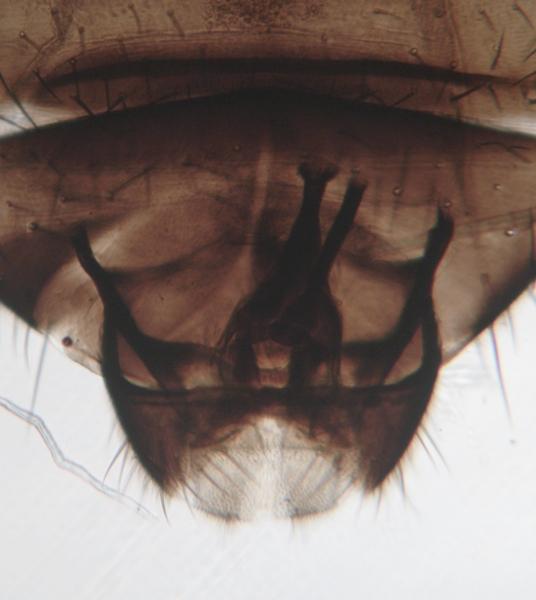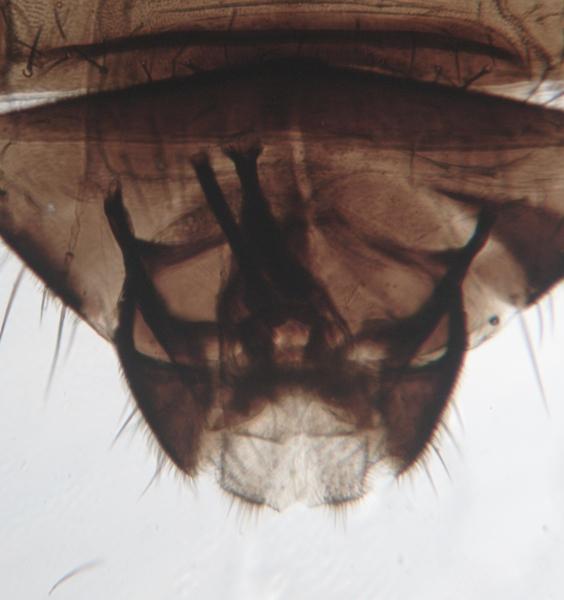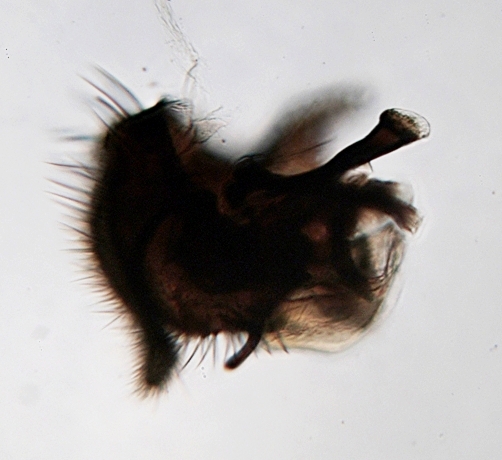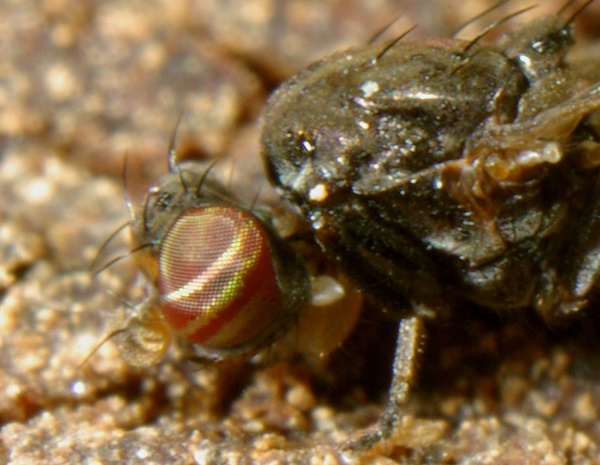Diptera.info :: Identification queries :: Diptera (adults)
|
Aulacigaster sp, W-HU, Juny 2009
|
|
| pwalter |
Posted on 29-01-2010 22:02
|
|
Member Location: Miskolc, Hungary Posts: 3555 Joined: 06.11.08 |
Hi, I had 2 specimens of Aulacigaster collected from tree sap. Both look quite like each other. This is the first:
pwalter attached the following image:  [79.47Kb] Edited by pwalter on 29-01-2010 22:03 |
|
|
|
| pwalter |
Posted on 29-01-2010 22:03
|
|
Member Location: Miskolc, Hungary Posts: 3555 Joined: 06.11.08 |
2
pwalter attached the following image:  [81.59Kb] |
|
|
|
| pwalter |
Posted on 08-02-2010 15:17
|
|
Member Location: Miskolc, Hungary Posts: 3555 Joined: 06.11.08 |
Hi, according to Manual of Palaearctic Diptera 3 it must be Aulacigaster falcata, male. Can anybody check it? page 280
pwalter attached the following image:  [145.92Kb] |
|
|
|
| phil withers |
Posted on 08-02-2010 17:26
|
|
Member Location: Lyon, France Posts: 521 Joined: 04.03.08 |
Either falcata or leucopeza: check the black markings on the frons. If large and almost touching the eye margin, it is falcata. |
|
|
|
| Jan Willem |
Posted on 08-02-2010 20:20
|
|
Member Location: Waalwijk, The Netherlands Posts: 2160 Joined: 24.07.04 |
My guess would be A. leucopeza, the surstylus seems not long enough (but it's difficult to judge from a photo, so I may very well be wrong). If it is A. leucopeza then the shining areas on the frons should be just small areas at the outside of the hind ocelli.
Jan Willem van Zuijlen |
|
|
|
| pwalter |
Posted on 11-02-2010 21:07
|
|
Member Location: Miskolc, Hungary Posts: 3555 Joined: 06.11.08 |
Hi, finally my computer is ok now, so I can show the picture os the animal. Unfortunately it is not clear, whether the markings are big or not, later I'll check the specimen (but only when I go home from the university). Walter pwalter attached the following image:  [144.41Kb] |
|
|
|
| viktor j nilsson |
Posted on 12-02-2010 07:37
|
|
Member Location: Gothenburg, Sweden Posts: 203 Joined: 25.02.08 |
Quite the opposite, from this nice picture it is very obvious that the spots are small, and it is thus A.leucopeza! Tou can compare the spots of A. leucopeza http://www.discov...+leucopeza with, for example A. pappi, which, like falcata, has large spots: http://www.discov...ster+pappi The discoverlife homepage has a very nice page with pics of several Aulacigaster species from around the world, check it out! And when you are there donīt miss Aulacigaster melanoleuca - strange creature! http://www.discov...e.org/20/q |
|
|
|
| pwalter |
Posted on 12-02-2010 10:18
|
|
Member Location: Miskolc, Hungary Posts: 3555 Joined: 06.11.08 |
Thank You very much for the help and the links! |
|
|
|
| pwalter |
Posted on 13-02-2010 23:00
|
|
Member Location: Miskolc, Hungary Posts: 3555 Joined: 06.11.08 |
Did not mention before: this A leucopeza was on the same tree as A. falcata. Interesting, sometimes I doubt that spp really fight for ecological niches that much and at one area only one species can fill a niche in. |
|
|
|
| viktor j nilsson |
Posted on 14-02-2010 19:31
|
|
Member Location: Gothenburg, Sweden Posts: 203 Joined: 25.02.08 |
Yes, I did notice that they are from the same place, and it did make me hesitate for a second. But then again, sometimes i really think that some of the ecological "rules" regarding competition and resource partitioning is quite often more of artefacts resulting from studying species dynamics in the species-poor assemblages readily studied by researchers living in temperate environments. |
|
|
|
| Jump to Forum: |












